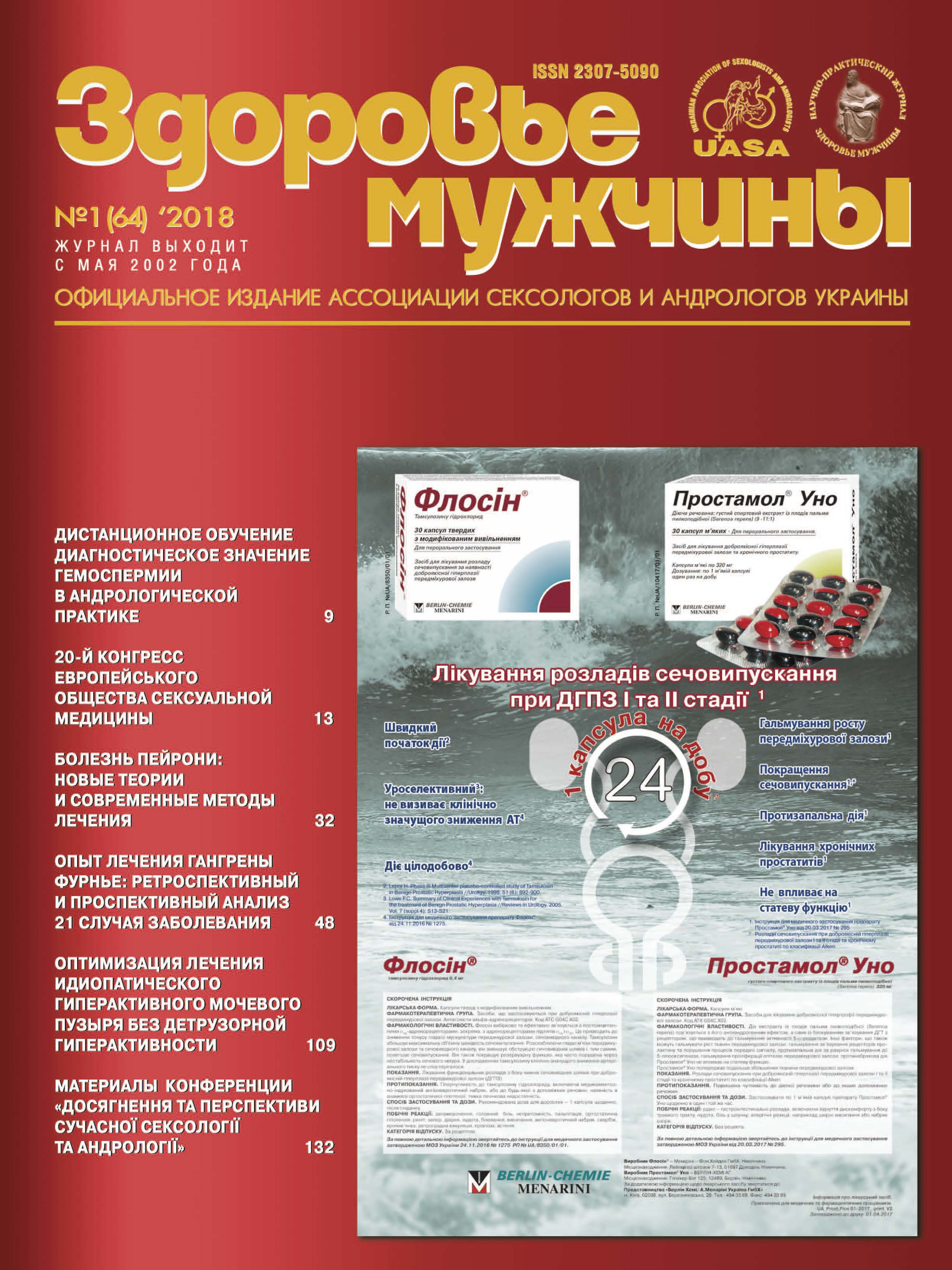Macro- and microelement status of patients with kidney stone disease
##plugins.themes.bootstrap3.article.main##
Abstract
The objective: to study the macro- and micro-elemental composition of blood in patients with urolithiasis and to substantiate the feasibility of using polyelemental medications.
Materials and methods. A total of 65 patients with urolithiasis(calcium oxalate nephrolithiasis), aged 20 to 65 years were examined. A control group, comprised 25 healthy individuals of the same age as the patients. Determination of microelements of blood serum was performed by atomic absorption spectrophotometry (A.G. Babenko, 1996).
Results. The study showed that the micro- and macroelement composition of blood in patients with urolithiasis was changed, what was manifested by a decreased concentration of magnesium, zinc with an excessive content of copper and calcium, and relatively normal values of cobalt and manganese. This can be explained by the fact that urolithiasis is accompanied by an energetic deficency which indicates the duration of the process. The obtained results allow to conclude that macro- and microelement blood analysis may be of interest in the field of urology as a noninvasive test for the identification of patients with mineral metabolism failure in order to further correction of such disorders and also as a tool for monitoring the effectiveness of treatment and preventing complications.
Conclusions. In patients with urolithiasis, there are disorders in the compound of macro- and microelements, which are manifested by an increase in the level of copper, calcium with simultaneous deficiency of zinc and magnesium. The presence of imbalance in the bioelement system is one of the pathogenetic mechanisms of development and progression of urolithiasis.##plugins.themes.bootstrap3.article.details##

This work is licensed under a Creative Commons Attribution 4.0 International License.
Authors retain the copyright and grant the journal the first publication of original scientific articles under the Creative Commons Attribution 4.0 International License, which allows others to distribute work with acknowledgment of authorship and first publication in this journal.
References
Бут Г.А. Микроэлементы и их роль в обеспечении иммунного ответа / Г.А. Бут // Новости мед. фармации. – 2008. – № 4 (235). – С. 13.
Возианов А.Ф. Атлас: руководство по урологии: в 3т. / А.Ф. Возианов, А.В. Люлько. – Днепропетровск: РИА «Днепр-VAL», 2001. – 195 с.
Дука К.Д. Мікроелементози – формування та корекція при синдромі екологічної дезадаптації / К.Д. Дука // ПАГ. – 2008. – № 4 (додаток). – С. 122–123.
Мочекаменная болезнь: этиопатогенез, диагностика, лечение и метафилактика: пособие / В.И. Вощула [и др.]; под общ. ред. В.И. Вощулы. – Минск: Зималето, 2010. – 220 с.
Оберлис Д.Н. Новый поход к проблеме дефицита микроэлементов / Д.Н. Оберлис // Микроэлементы в медицине. – 2002. – Т. 3, вып. 1. – С. 2–7.
Савустьяненко А.В. Биологическая роль магния / А.В. Савустьяненко // Новости мед. фармации. – 2007. – 18 (225). – С. 20–21.
Черненко В.В. Підвищення ефективності реабілітації у хворих на сечокам’яну хворобу після проведення літотрипсії /В.В. Черненко, Д.В. Черненко // Урологія. – 2015. – № 4. – С. 14–20.
Шкала Л.В. Мікроелементи: біологічна роль в організмі / Л.В. Шкала // Галицький лікарський вісник. – 2003. – № 4. – С. 125–127.
Ferre-Huguet N. Monitoring metals in blood and hair of the population living near a hazardous waste incinerator: temporal trend / N. Ferre-Huguet, M. Nadal, M. Schumacher and al. // Biol. Trace Elem. Res. – 2009. – Vol. 128, № 3. – P. 191–199. https://doi.org/10.1007/s12011-008-8274-9
Zimmermann M.B. Iodine Deficiency / M.B. Zimmermann // Endocrine Reviews. – 2009. – № 30 (40). – Р. 376–408. https://doi.org/10.1210/er.2009-0011
Rink L. Zinc-altered immune function and cytokine production / L. Rink, H. Kirchner // J. Nutr. 2000. – Vol. 130. – P. 1407–1411. https://doi.org/10.1093/jn/130.5.1407S





